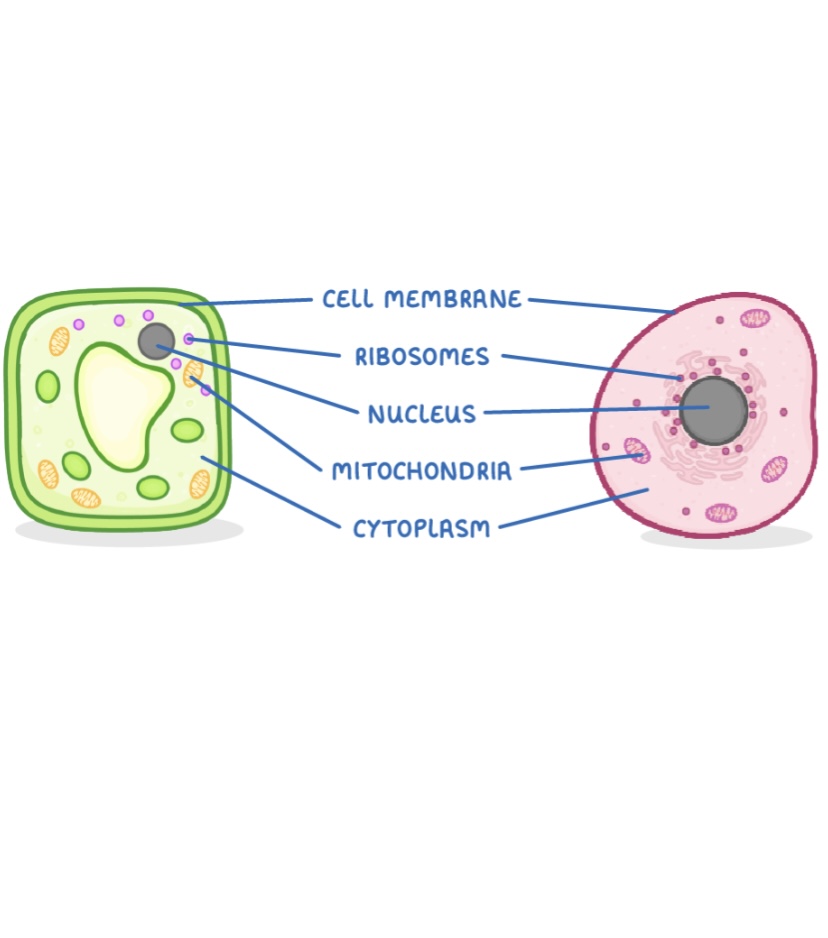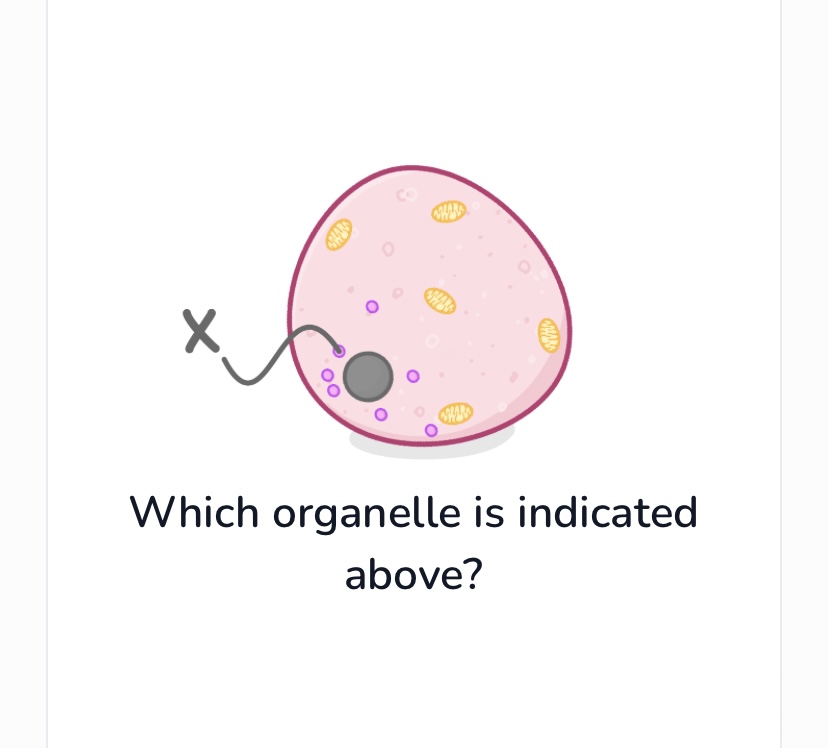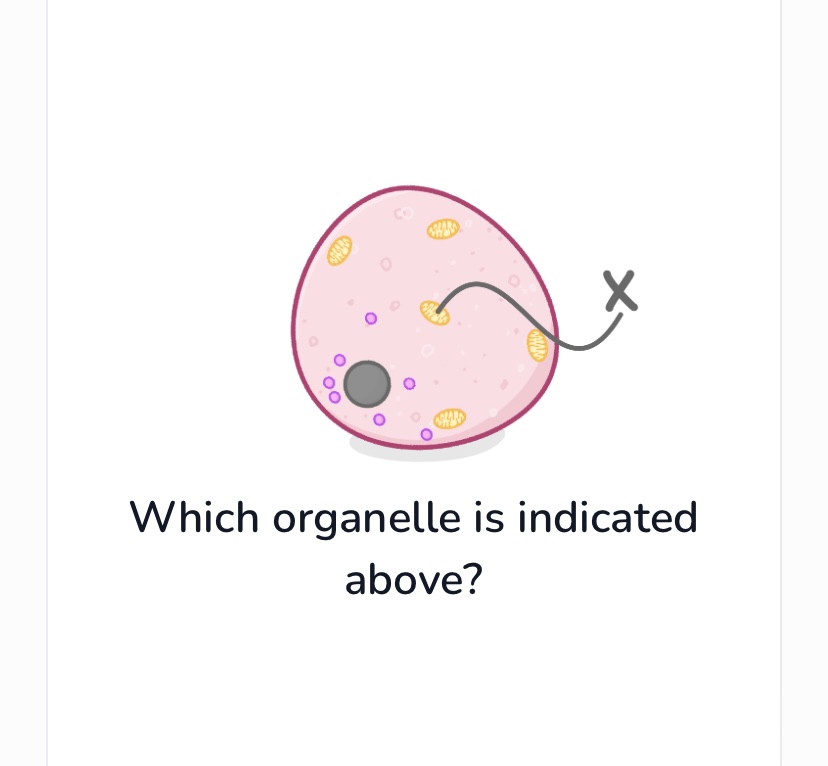cell structure
1/57
There's no tags or description
Looks like no tags are added yet.
Name | Mastery | Learn | Test | Matching | Spaced |
|---|
No study sessions yet.
58 Terms
What is a cell?
A cell is the smallest unit of life that can live on its own. Cells make up all living organisms and their tissues.
What are the differences between eukaryotic and prokaryotic cells? (3)
Eukaryotic cells are much larger than prokaryotic cells.
Eukaryotic cells contain membrane-bound organelles, while prokaryotic cells do not.
Eukaryotic cells keep their DNA in the form of chromosomes within a nucleus, whilst prokaryotic cells have their DNA loose in the cell.
For animal, plant, and bacterialcells, state whether they are either eukaryotic or prokaryotic.
Animal and plant cells are eukaryotic.
Bacterial cells are prokaryotic.
Name 5 sub-cellular structures (organelles) that are found in both animal and plant cells.

What is the cell membrane and what is its role?
The cell membrane is a protective barrier around the outside of the cell.
It controls which substances can pass in and out of the cell.
What is the cytoplasm and what is its role?
The cytoplasm is a jelly-like liquid that fills the cell.
It allows substances to dissolve, and chemical reactions to take place.

Ribosome
What is the role of the nucleus?
It contains the genetic material (DNA) of the cell, and so controls what the cell does.
What is the role of the mitochondria?
They carry out aerobic respiration, so provide energy (in the form of ATP) for the cell to use in chemical reactions.
What is the role of the ribosomes?
They are the site of protein synthesis (where proteins are made).

Mitochondrion.
(if you have more than one you call them 'mitochondria')